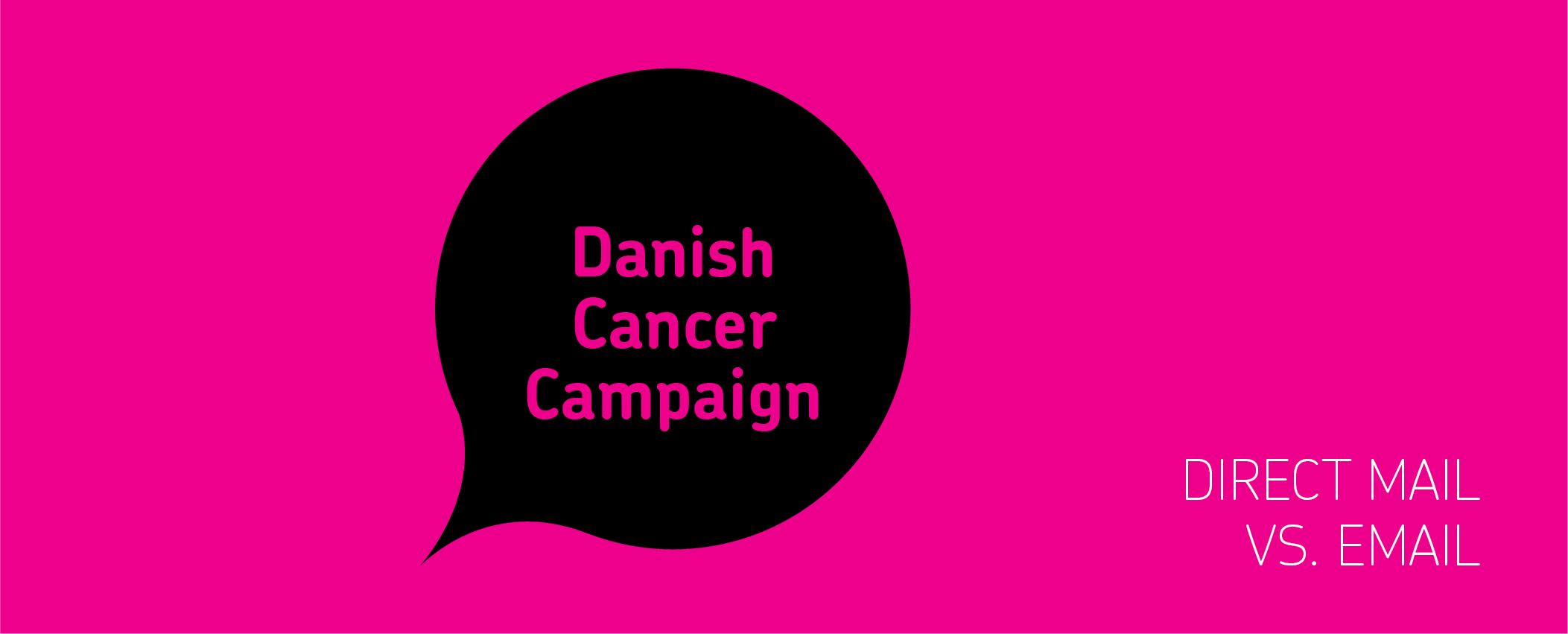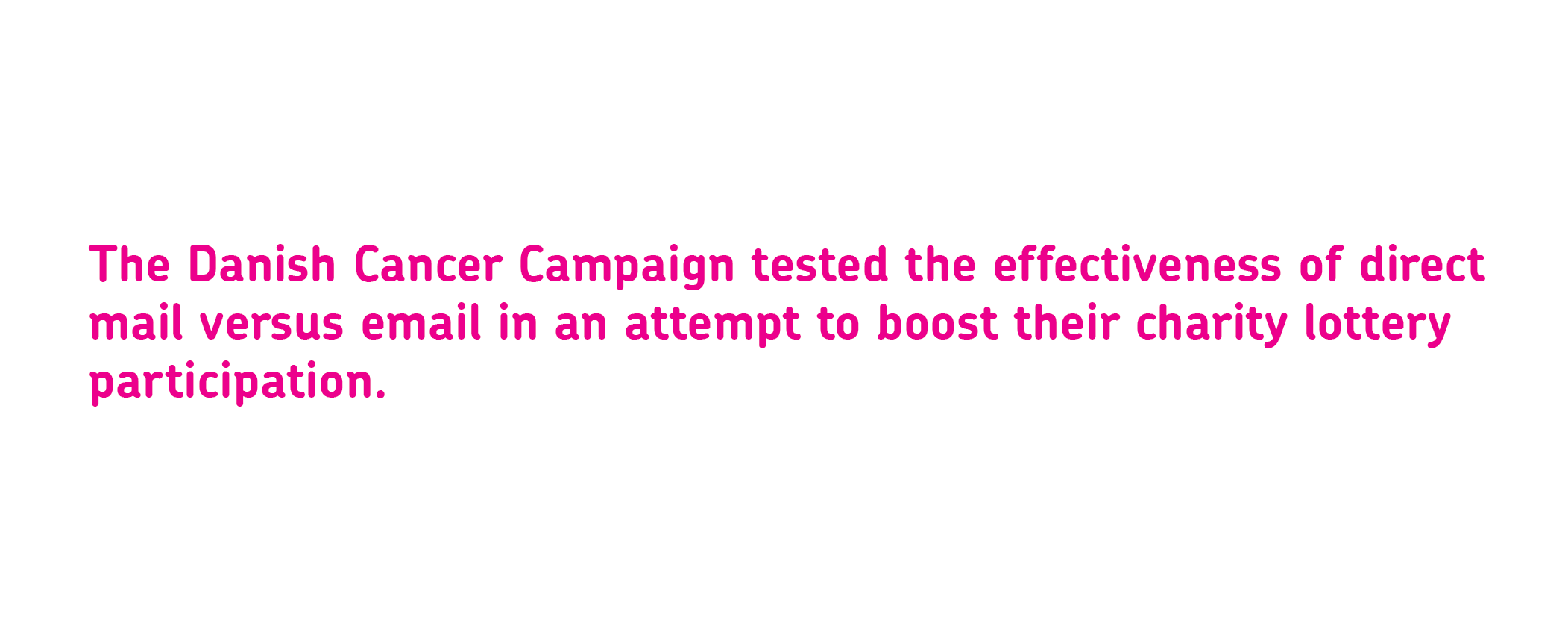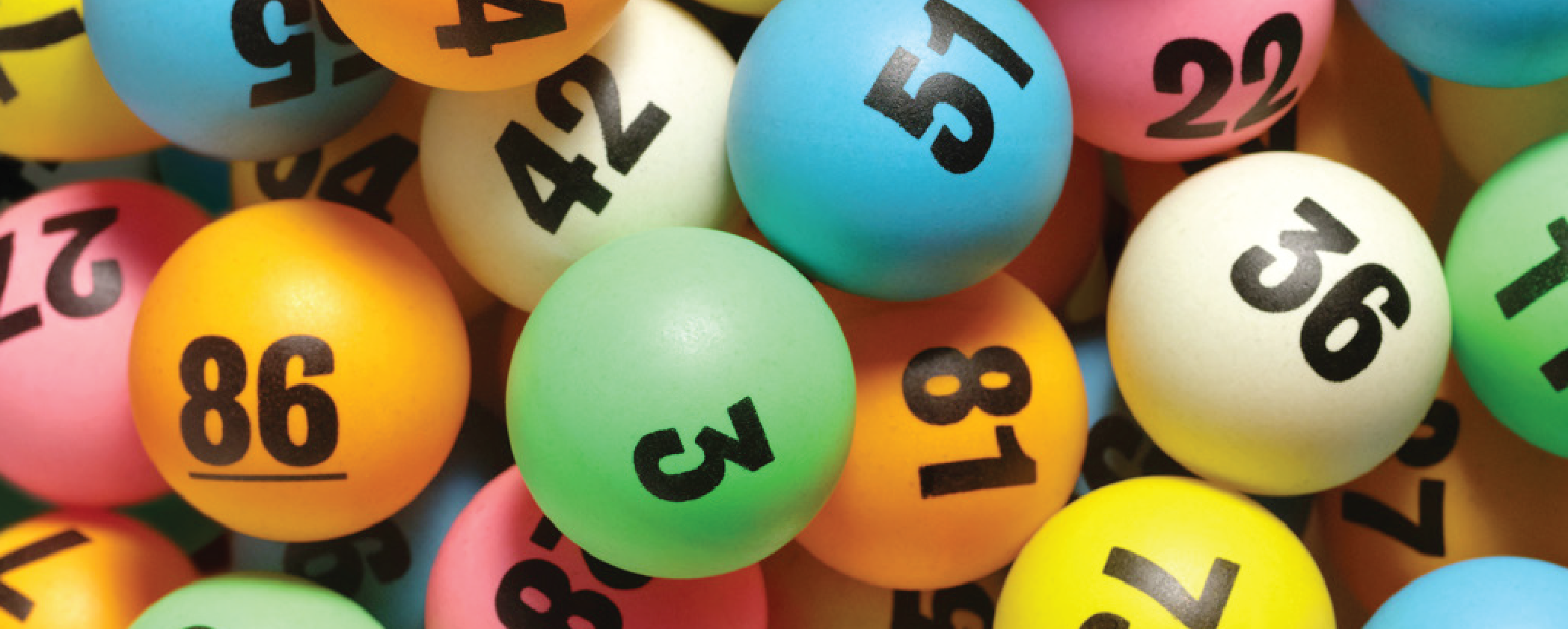Case study by VoPP for the Danish Cancer Campaign
OBJECTIVE
The “Harvest Lottery”, with cash prizes up to 1 million Danish kroner, constitutes a substantial portion of the Campaign’s lottery budget so they set out to compare print and email’s call-to-action performance. They hoped that through measuring the response and recollection rates of post versus email reminders, they would be able to decipher which channel elicited the best audience engagement and action.
METHOD
After sending out 200,000 written invitations encouraging participation in the annual fundraising event, the campaign formed three groups (each with 2,000 members) to test the effectiveness of direct mail and email when reminding members in each group. The groups are below:
GROUP 1: Elected to receive emails, and received an email reminder
GROUP 2: Also elected to receive emails, but received a postal reminder instead
GROUP 3: Elected to receive a postal reminder, and received a postal reminder
Once the reminders had been sent out, the percentage of people who took part in the lottery as well as recollection rates was measured. The campaign tested the group’s recollection of the lottery reminder via a phone conversation, first performing a non-prompted recall test, followed by a cued recall test.
In the words of the report of this campaign,
“Direct mail signals care, trustworthiness and seriousness. Since it is considered personal, it is a media well-suited to charitable lotteries.”
RESULTS
Response Rates
When testing the effectiveness of each channel’s response rates, direct mail’s call to action was more powerful, producing twice the response of the email reminder.
GROUP 1: Email – 12%
GROUP 2: Direct mail – 24%
GROUP 3: Direct mail – 29%
Recall
The same goes for recollection rates. When testing the group’s recollection without prompts, only 25% of those who received an email recalled the lottery reminder. Contrasting this with direct mail, 58% and 55% were able to remember the letter they received.
GROUP 1: Email – 25%
GROUP 2: Direct mail – 58%
GROUP 3: Direct mail – 55%
The cued recall test shows a similar story, with 85% of group 2 and 80% of group 3 recalling their postal reminder, while the email recipients (group 1) had a recall rate of only 63%.
This demonstrates that the strong recollection performance of print correlates with strong response rates. In other words, direct mail is memorable as well as persuasive.
CONCLUSION
The results of this test confirm the relevancy and effectiveness of print and the Cancer Campaign has chosen to continue to keep direct mail at the center of its communication to donours.
With today’s high pressure to go with digital marketing, this study is a great reminder that receiving and opening a hard-copy letter is more personal and memorable, and testing to find out how each channel works within certain markets is key. If you are looking to increase campaign response rates and brand recollection, direct mail might be in the cards for you.



